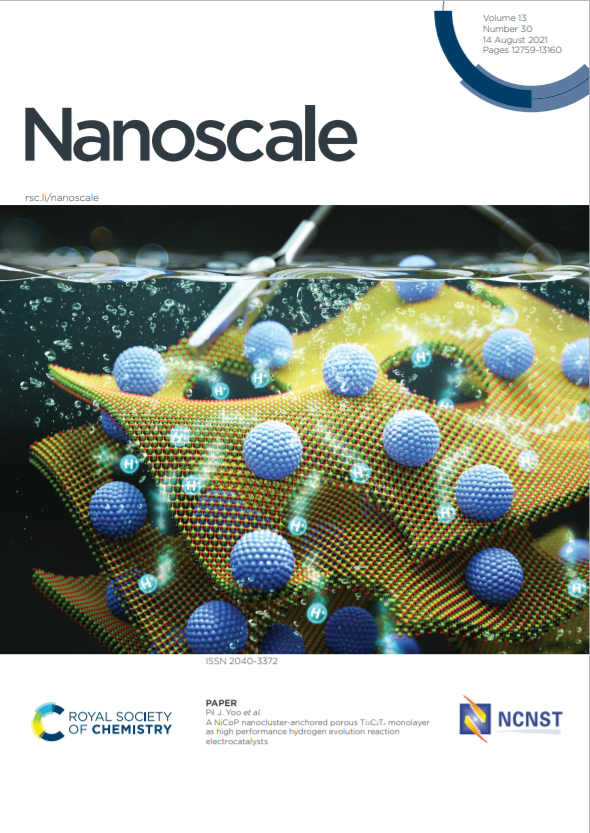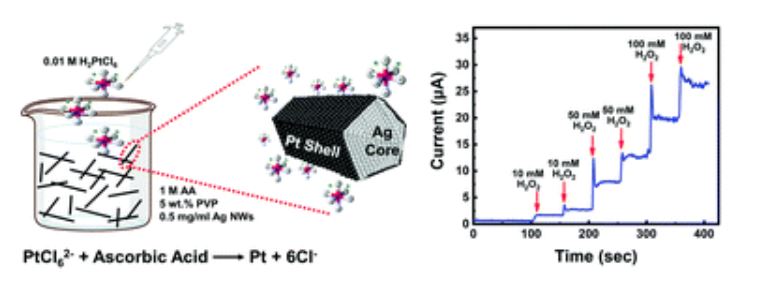110. Highly Stable Silver-Platinum Core-Shell Nanowires for H2O2 Detection
- English
- Türkçe


Silver nanowire (Ag NW) networks have great potential to replace commercial transparent conducting oxides due to their superior properties in conjunction with their competitive cost, availability and mechanical flexibility. However, there are still challenges to overcome for the large scale utilization of Ag NWs in devices due to oxidation/sulfidation of NWs, which leads to performance loss. Here, we develop a solution-based strategy to deposit a thin platinum (Pt) shell layer (15 nm) onto Ag NWs to improve their chemical, environmental and electrochemical stabilities. Environmental and thermal stabilities of the core–shell NW networks were monitored under different relative humidity conditions (RH of 43, 75 and 85%) and temperature settings (75 °C for 120 hours and 150 °C for 40 hours) and compared to those of bare Ag NWs. Afterwards, stability of core–shell NW networks in hydrogen peroxide was investigated and compared to that of bare Ag NW networks. The potential window for electrochemical stability of the Ag NW networks was broadened to 0–1 V (vs. Ag/AgCl) upon Pt deposition, while bare Ag NWs were stable only in the 0–0.6 V range. Moreover, Ag–Pt core–shell NWs were used for the detection of hydrogen peroxide, where a high sensitivity of 0.04 μA μM−1 over a wide linear range of concentrations (16.6–990.1 μM) with a low detection limit (10.95 μM) was obtained for the fabricated sensors. All in all, this highly effective and simple strategy to improve the stability of Ag NWs will certainly open new avenues for their large-scale utilization in various electrochemical and sensing devices.
